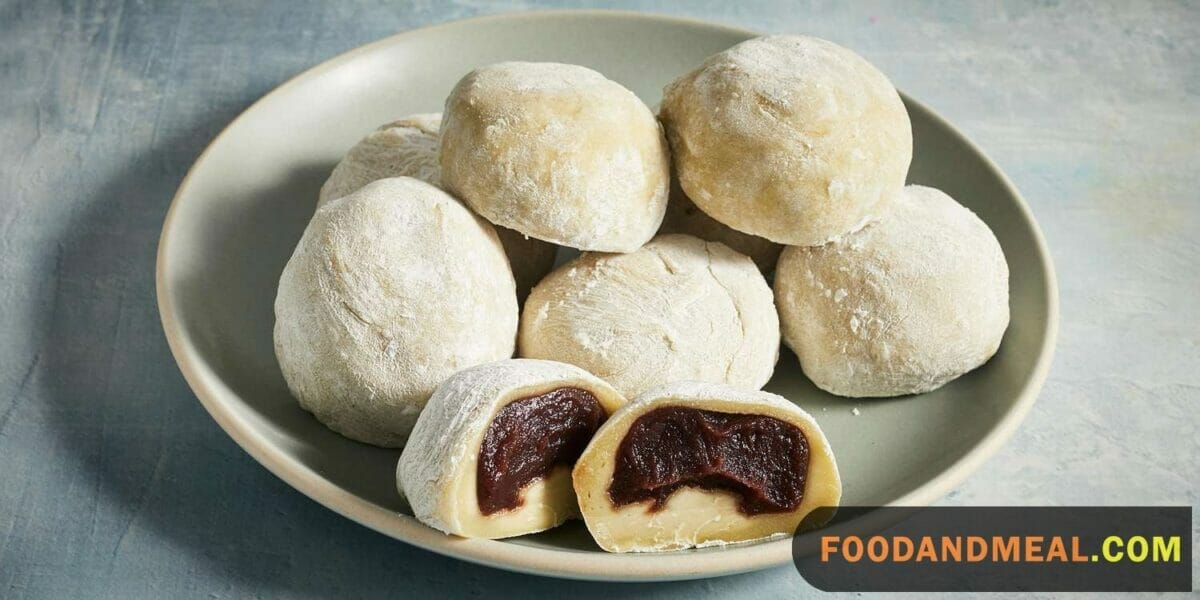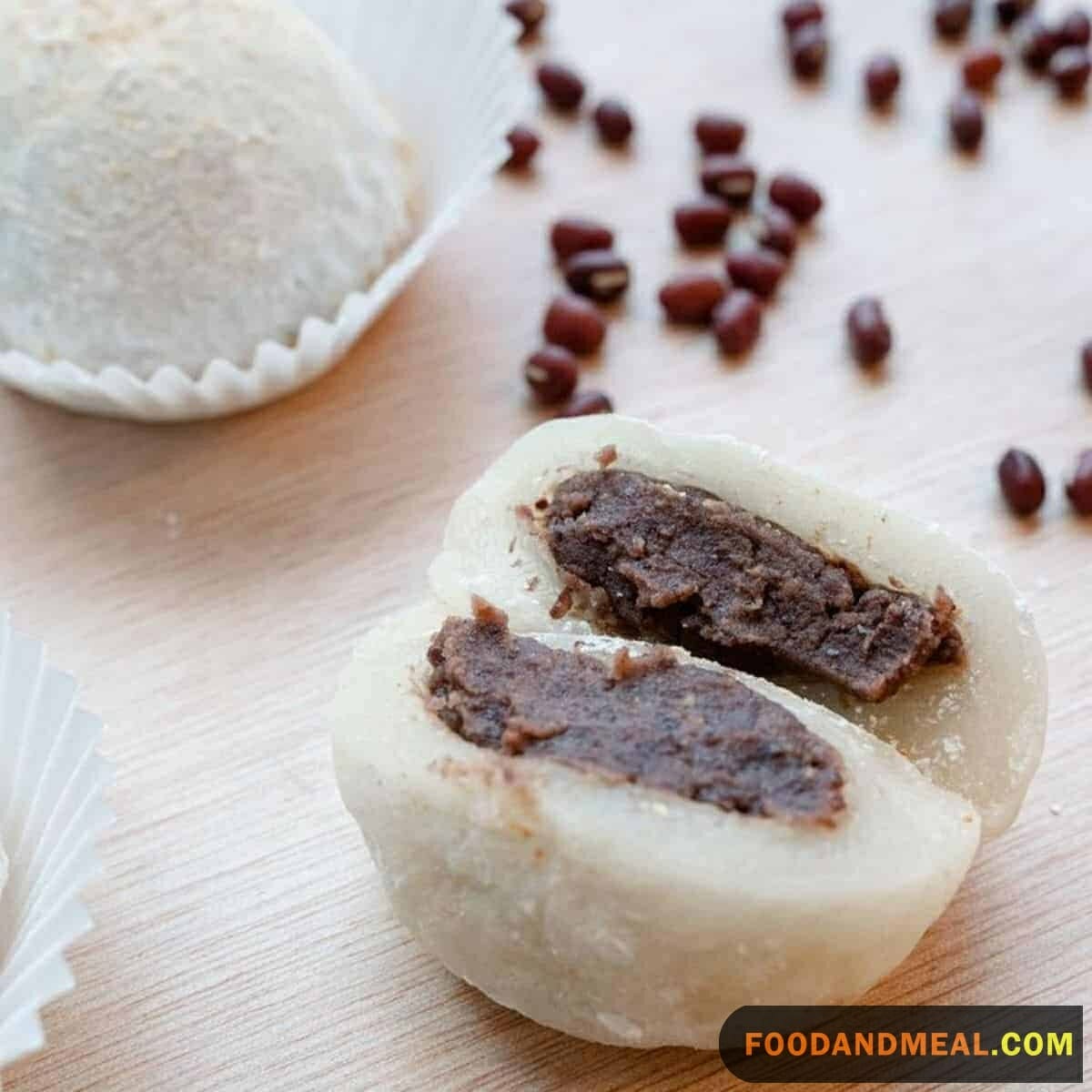The name “sweet Mochi” comes from its Japanese origin, where it’s made from pounded short-grain japonica glutinous rice, which is sometimes flavored with sugar or other ingredients. The rice is first pounded to form a paste, then molded into the desired shape. In Japan, this tradition is performed as part of a ceremonial process known as mochitsuki. In America, this sweet treat is more commonly made from chocolate, but can contain anything from nuts to gummies.
Sweet Mochi is an excellent way to celebrate the New Year. The traditional Japanese dessert is made by mixing a thick paste of red bean paste, water, and salt. After the sugar has cooled, you can spread it with the Tsubu-an paste and roll it into oblongs. You can also slice the Mochi in squares and cut it into small pieces. Regardless of what filling you decide to use, you will definitely enjoy your new favorite Japanese sweet!
Japanese Sweet Mochi Recipes


Sweet Mochi
Ingredients
- 1 cup mochiko mocha flour
- 1 cup water
- 2 cups sugar
- Cornstarch
- Optional: Anko sweet red bean paste
Instructions
- Mix water and mochiko in a glass bowl. Add water if too dry (1 tbsp at a time).
- Place the dough in a steamer and steam for about 20 Minutes.
- Transfer to a pot and cook with cup sugar under medium-low heat until sugar is dissolved completely.
- Add another cup sugar then mix well. Add the remaining sugar and continue cooking until dissolved. Make sure it does not burn.
- Transfer the hot mocha to a sheet pan that is dusted with cornstarch.
- Shape to your desire and serve.
Video
Notes
Nutrition
© Food And Meal
This website provides approximate nutrition information for convenience and as a courtesy only. Nutrition data is gathered primarily from the Spoonacular Database, whenever available, or otherwise other online calculators.
Alternative Method: Steamer

Prepare the perfect batch of homemade steamed sweet mochi by first setting up your steamer, whether it’s bamboo, metal, or a makeshift version with a pot and steaming basket. Line the steaming surface with parchment paper or cloth to prevent sticking. In a mixing bowl, create a smooth mixture by combining glutinous rice flour, sugar, and water. Spread this mixture evenly on the steaming surface, aiming for a thickness of about 1/2 inch. Steam over high heat for 20-30 minutes until the mochi becomes translucent and bouncy. Meanwhile, prepare your desired filling, such as red bean paste or sweetened fruit. Once the mochi is ready, carefully cut it into squares or rectangles on a starch-dusted surface. Flatten each piece, add a small amount of filling, and seal the mochi around it, forming smooth balls or oblong shapes. Serve the homemade steamed sweet mochi warm for immediate enjoyment, or let it cool for a slightly firmer texture. Enjoy the delightful combination of chewy mochi and sweet fillings in every bite.
Tips for making sweet mochi

Cooking Tips
The process begins with selecting the right type of rice—glutinous or ‘sweet’ rice—known for its sticky and pliable nature post-cooking. Rinsing the grains becomes a quiet ritual, preparing the canvas for the impending storm of pounding and shaping. Steaming the rice requires watchfulness and patience, ensuring a delicate balance that results in the quintessential mochi chewiness.
If one embraces the traditional method of pounding the steamed rice, the rhythmic thud of the pestle against the mortar becomes a therapeutic release of energy and emotion, infusing the mochi with soulfulness and sincere craftsmanship. Shaping the sweet mochi is a tactile experience guided by the heart, with dusted hands preventing sticking—an allegory of finding beauty in both holding onto memories and letting go.
Serving Suggestions

Sweet Mochi, celebrated for its chewy texture and sweet fillings, serves as a delightful conclusion to meals or a stand-alone treat. To enhance its culinary experience, suggested pairings include enjoying it with green tea for balance, savoring its gentle sweetness after fresh sashimi, pairing it with savory oyakodon, trying it alongside daifuku for diverse textures, serving it with dairy-free milk for a creamy touch, combining it with karaage‘s crunch, or concluding a shoyu ramen meal for a harmonious finale. These pairings offer a rich exploration of flavors and textures in Japanese cuisine, making sweet mochi a versatile and comforting tradition for any dining setting.
FAQs about sweet mochi

- Can I make mochi in advance? Yes, you can make mochi a day in advance. Keep it in an airtight container to maintain freshness.
- How do I store leftovers? Leftover sweet mochi should be stored in an airtight container in the refrigerator. Use parchment paper to separate layers and prevent sticking.
- Can I freeze mochi? Yes, you can freeze sweet mochi. Ensure it’s well-wrapped to prevent freezer burn. Allow it to thaw at room temperature before serving.
- Why did my mochi turn out too hard or too soft? The texture of mochi can vary based on factors like cooking time and the quality of the glutinous rice flour. Adjust these variables to achieve your desired texture.
- What are some creative fillings to try? Aside from traditional fillings, you can experiment with fillings like Nutella, fresh strawberries, or even a blend of peanut butter and honey for a unique twist.
Conclusion
As we gently place our final piece of Sweet Mochi onto the platter, completing our gastronomic journey through this charming Japanese treat, I, Gobble from Food and Meal, invite you to bask in the satisfaction of creation. Our shared path, strewn with tender rice dough and sweet fillings, culminates in a moment of sweet reflection.
Throughout our exploration at foodandmeal.com, we discovered how Sweet Mochi is more than just a dessert; it’s a cultural emblem, a touchstone of festivities, and a simple, soulful pleasure wrapped in a soft, chewy exterior. And as you have patiently steamed, pounded, and molded, perhaps you’ve felt not only the stickiness of mochi on your fingertips but also the warmth of tradition and the comfort of crafting something truly special with your own hands.
Our hope at Food and Meal is that diving into this recipe opens up your world to more than new tastes—it offers a connection to a culture steeped in reverence for each step of the cooking process. As your trusty guide, I aimed not only to teach you the techniques of making Sweet Mochi but also to inspire an appreciation for the emotions interlaced with each pinch, fold, and press.
Whether you’re enjoying your Sweet Mochi under the bloom of cherry blossoms or sharing it with loved ones over a cup of steaming tea, take pride in the knowledge that each bite holds the essence of your efforts and the joy of culinary discovery. This small confectionery delight embodies the magic that happens when we come together through food—sharing stories, smiles, and sweetness.
Hi! I’m Paula from the Philippines, the passionate blogger and skilled photographer behind Gobble the Cook. I also spearhead the media photography for Food And Meal in Vietnam.



